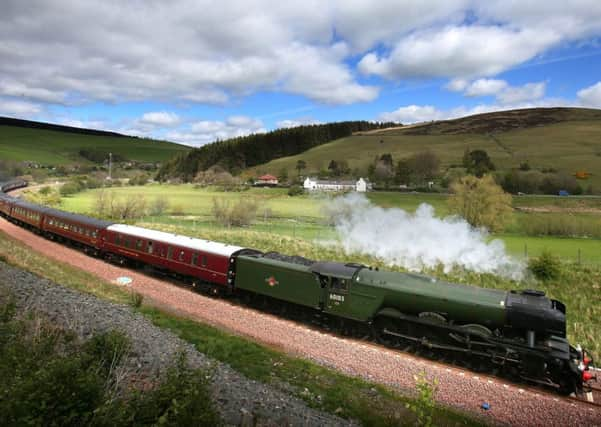Sir Peter Hendy: Settle-Carlisle railway reopening is a link both to the past and our future


A total of half a million tonnes of earth, trees and railway was on the move – the equivalent of almost 100 times the weight of the Titanic – severing a vital economic rail artery for people and goods, and one of the most beautiful railway routes in Britain.
Today, after 13 months of toil by Network Rail’s army of orange-clad engineers, a new, but invisible, 100m long viaduct has been built into the hillside.
Advertisement
Hide AdAdvertisement
Hide AdThe track has been re-laid and the line reopened. The world’s most famous steam locomotive – Flying Scotsman – will mark the occasion, and it is an occasion that should be marked.
Why?
Because our railways play an essential role in the wealth of our nation. Britain’s railway nework is the oldest in the world. It enables economic growth, jobs and housing across the UK. Britain really does run on rail.
Over the last 20 years, the railway has made good progress. In that time it has more than doubled the number of people it carries. It is the safest and fastest growing railway in Europe, consuming half the Government subsidy of French railways and a third of those in Germany. And freight trains take 7.6 million lorries off the road each year, cutting congestion and emissions.
Coping with growth is a welcome challenge from the decline of 30 years ago. It’s a huge challenge to the entire industry. We need more trains, more track, more seats and 21st century digital signalling, resulting in a more reliable service with more capacity.
Advertisement
Hide AdAdvertisement
Hide AdThere is a clear plan to invest in, and improve, the railway to make it better for passengers and businesses that rely so heavily on it.
We are in the midst of the biggest sustained investment plan our railway has seen since Victorian times – our railway upgrade plan – a £50bn investment in growing and improving our railways in the five years to 2019.
The Great North Rail Project (GNRP) is a key part of this plan. It is a multi-billion pound programme of improvements to transform train travel across the North – supporting the Government’s Northern Powerhouse agenda. It is a joint programme supported by the Department for Transport, Transport for the North and two train operators – TransPennine Express and Northern.
The project will enable hundreds more trains to run each day.
Advertisement
Hide AdAdvertisement
Hide AdMore trains with more seats, running more quickly, frequently. And reliably.
We know that better connectivity and better and more services deliver huge local and regional economic benefits, creating new opportunities, new jobs, new businesses, new housing and boosting prosperity for all.
But our task is not only to deliver these visionary plans but also to improve people’s day-to-day experience.
That is why we at Network Rail are working more closely than ever before with the train operating companies to improve journeys and to tackle the problems of today. Our railway is the lifeblood of Great Britain.
Advertisement
Hide AdAdvertisement
Hide AdIt is essential to our economic success today and for the future.
Now more than ever, investing in our railway and finding new sources and ways to fund our railways is the right thing to do for the long-term, creating opportunities across Britain to improve our passengers’ experience and boost our country’s economic success.
Sir Peter Hendy is chairman of Network Rail.